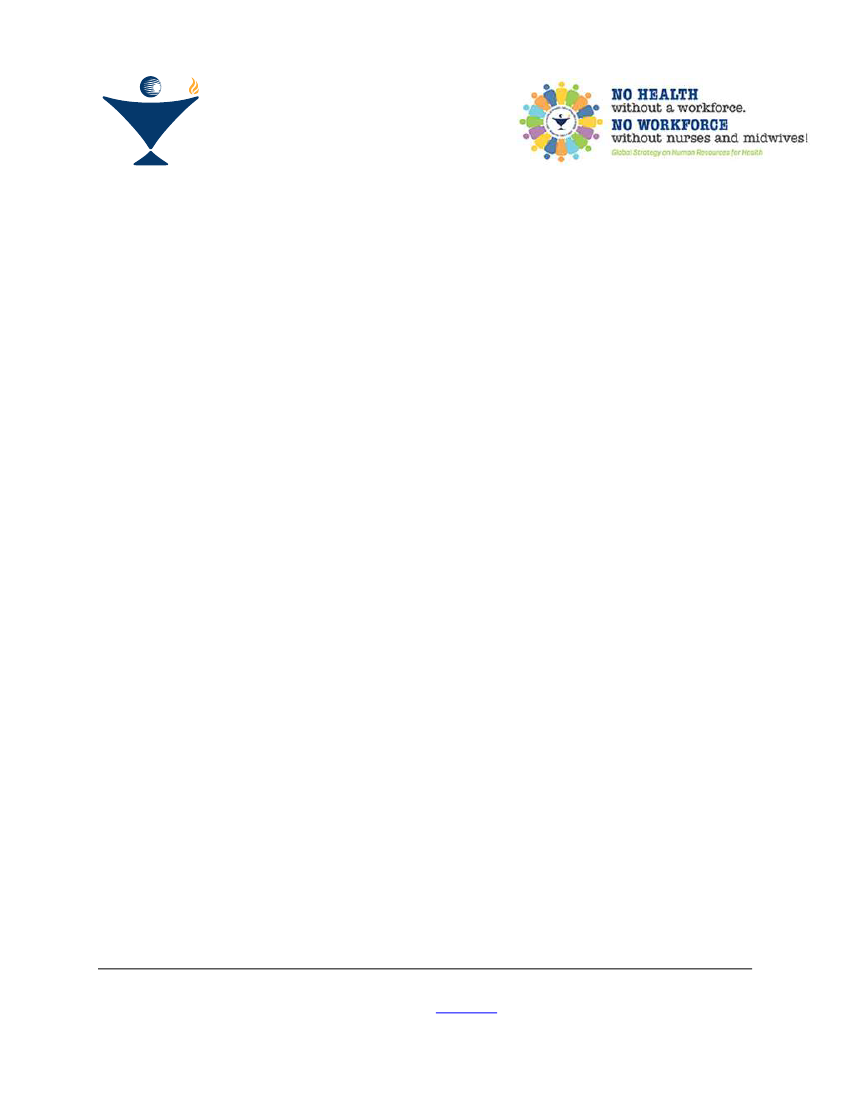
ICN Policy Brief
Advanced Practice Nursing:
An Essential Component of Country Level Human Resources for Health
Authors
Denise Bryant-Lukosius, RN, CON(C), PhD and Ruth Martin-Misener, NP, PhD
Purpose
Globally, there is high demand and interest in advanced practice nursing (APN) roles as an
essential vehicle for innovation and healthcare reform to provide more effective and sustainable
models of healthcare.
1
This paper outlines important implications for integrating APN roles in
country level human resources for health (HRH) by summarising the evidence on: i) facilitators
and evidence-based strategies for effective APN role implementation; ii) the contribution of
APN roles for improving health and health system outcomes; and iii) the alignment of APN roles
with the World Health Organization's (WHO) Global Strategy on Human Resources for Health
2
and with the United Nation's
3
Sustainable Development Goals.
This paper should be read in relation to the zero draft of the “Health Workforce 2030: A Global
Strategy on Human Resources for Health”.
2
Background
Defining the advanced practice nurse and types of APN roles.
According to the International
Council of Nurses (ICN), an advanced practice nurse is a "registered nurse who has acquired
the expert knowledge base, complex decision-making skills and clinical competencies for
expanded practice, the characteristics of which are shaped by the context and/or country in
which s/he is credentialed to practice. A master's degree is recommended for entry level."
4
(2008, p.7). Clinical practice is a defining feature of APN roles. However,
what makes the roles
advanced and the means through which healthcare reform and innovation can be achieved,
is
the integration of clinical practice with responsibilities for education, organisational leadership,
professional development, evidence-based practice and research.
5,6,7
The two most common types of APN roles, the Clinical Nurse Specialist (CNS) and the Nurse
Practitioner (NP)
8,9
are the focus of this paper. How CNSs and NPs enact their roles is highly
variable in response to population health and practice setting needs. This fluidity makes CNSs
and NPs assets for addressing dynamic healthcare system needs, but can also contribute to
role confusion. CNSs often have greater responsibilities for non-clinical activities such as
education or quality improvement. NPs tend to have greater involvement in clinical care. NPs
ICN • CIE • CII
3, place Jean-Marteau, 1201 Ginebra- Suiza - Tfno.: +41 22 908 01 00
Fax: +41 22 908 01 01 – c. elect.:
- Web: www.icn.ch